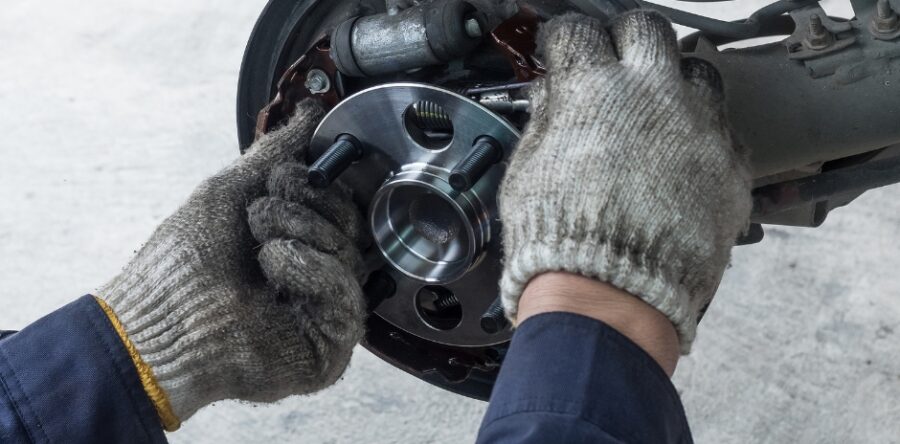Your vehicle's braking system is its most critical safety component, and understanding how it works can help you extend its lifespan, save money, and stay safe on the road. At Brake and Equipment, we've spent over 55 years supplying the Upper Midwest with high-quality auto and truck parts. We've also evolved into a full-line automotive warehouse and offer a full-service in-house Machine Shop specializing in custom brake solutions. One essential maintenance service that many drivers overlook is brake drum and rotor turning—a cost-effective way to restore your braking system to like-new performance.
Understanding the Components of Your Braking System
Before we dive into the rotor and drum turning, let’s take a moment to break down the main components of a typical braking system:
● Brake Pads: Apply pressure and friction to the rotors, slowing your vehicle down.
● Brake Rotors (or Discs): Metal discs attached to the wheel hubs. When the pads clamp
onto them, the vehicle slows.
● Brake Drums: These are found in drum brake systems (typically in older or rear-wheel
setups), which are round drums that brake shoes press against to create friction.
● Brake Shoes: Used in drum brakes; they expand outward to press against the inside of
the brake drum.
● Calipers: In disc brake systems, calipers house the brake pads and use hydraulic
pressure to squeeze the rotors.
● Brake Lines and Hoses: These carry brake fluid from the master cylinder to the calipers
or wheel cylinders.
● Master Cylinder: Converts brake pedal pressure into hydraulic pressure.
Each of these parts works together to give you the stopping power you rely on. Keeping them in good condition—especially the rotors and drums—significantly affects braking efficiency.
What Is Brake Drum and Rotor Turning?
Turning, also known as resurfacing, is the process of machining the surface of brake rotors and drums to remove uneven wear, grooves, or warping. Over time, constant pressure and heat can cause these components to wear down. Instead of replacing them, turning can extend their life by restoring a smooth, even surface for the brake pads or shoes to contact.
The Benefits of Rotor and Drum Turning
● Cost Savings: It's significantly cheaper than replacing rotors or drums.
● Improved Braking Performance: A smooth surface allows for better contact with the
brake pads or shoes.
● Reduced Vibration: Warped rotors can cause steering wheel vibrations; turning removes the distortion.
● Extended Brake Pad Life: Uneven rotors wear pads down faster. Turning ensures consistent wear.
When Should You Resurface Rotors or Drums?
● When you hear squealing or grinding noises
● When you feel vibrations while braking
● When the rotors or drums have grooves, heat spots, or minor warping
● When replacing brake pads or shoes (if the surfaces aren’t smooth)
Important: Not all rotors and drums can be turned. If they’re worn beyond their minimum thickness, replacement is necessary.
Why Choose Brake and Equipment’s Machine Shop?
At Brake and Equipment, we don’t just sell parts—we help you restore and maintain your braking system for the long haul. Our in-house Machine Shop is a one-stop solution for custom and precision brake services, including:
● Custom Brake Solutions: Tailored for performance, classic, or specialty vehicles
● Brake Drum and Rotor Turning: Expert resurfacing to extend the life of your
components
● Brake Shoe and Pad Relining: An economical alternative to buying new
● Cylinder Sleeving: Repair worn or corroded cylinders with long-lasting sleeves
● Custom Hose Manufacturing: Hydraulic, air, and specialty hoses made to your specs
● Brake Restoration: Classic car? Specialty truck? We’ve got you covered.
Our seasoned techs use state-of-the-art equipment to deliver precise, reliable results every time.
Frequently Asked Questions (FAQ)
Q: How do I know if my rotors or drums can be turned?
A: A technician will measure the thickness and inspect for cracks or severe damage. If they’re within spec, they can usually be turned.
Q: How long does rotor or drum turning take?
A: In most cases, resurfacing takes about 30–60 minutes per axle, depending on the extent of the wear.
Q: Is it always better to resurface instead of replace?
A: Not necessarily. If your rotors or drums are too thin or heavily damaged, replacement is the safer option.
Q: Can I turn rotors or drums at home?
A: Not easily. This process requires specialized lathes and precision measuring tools—our Machine Shop has the expertise and equipment to do it right.
Extend the Life of Your Braking System with Brake and Equipment
Whether you're a DIY mechanic or managing a fleet of vehicles, trust Brake and Equipment for expert brake care. Our rotor and drum-turning services help you get the most out of your braking components while ensuring top-tier safety and performance.
Stop by our Minneapolis warehouse or visit Brake and Equipment to learn more about our Machine Shop and brake services. For over 55 years, we’ve been proud to keep the Upper Midwest moving safely and affordably.


